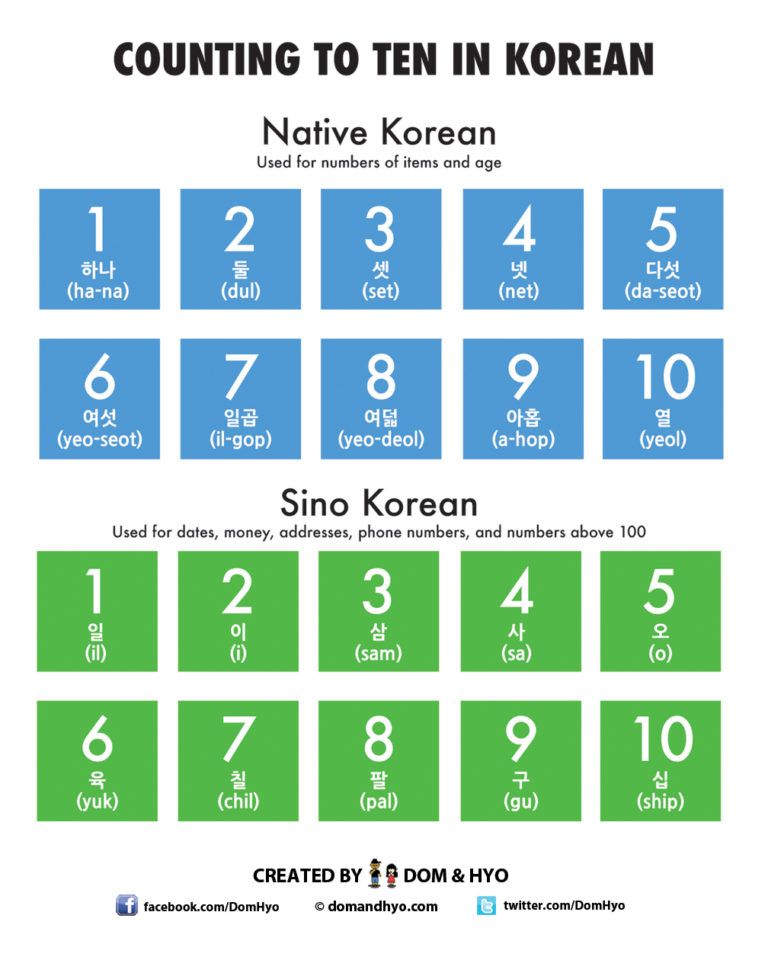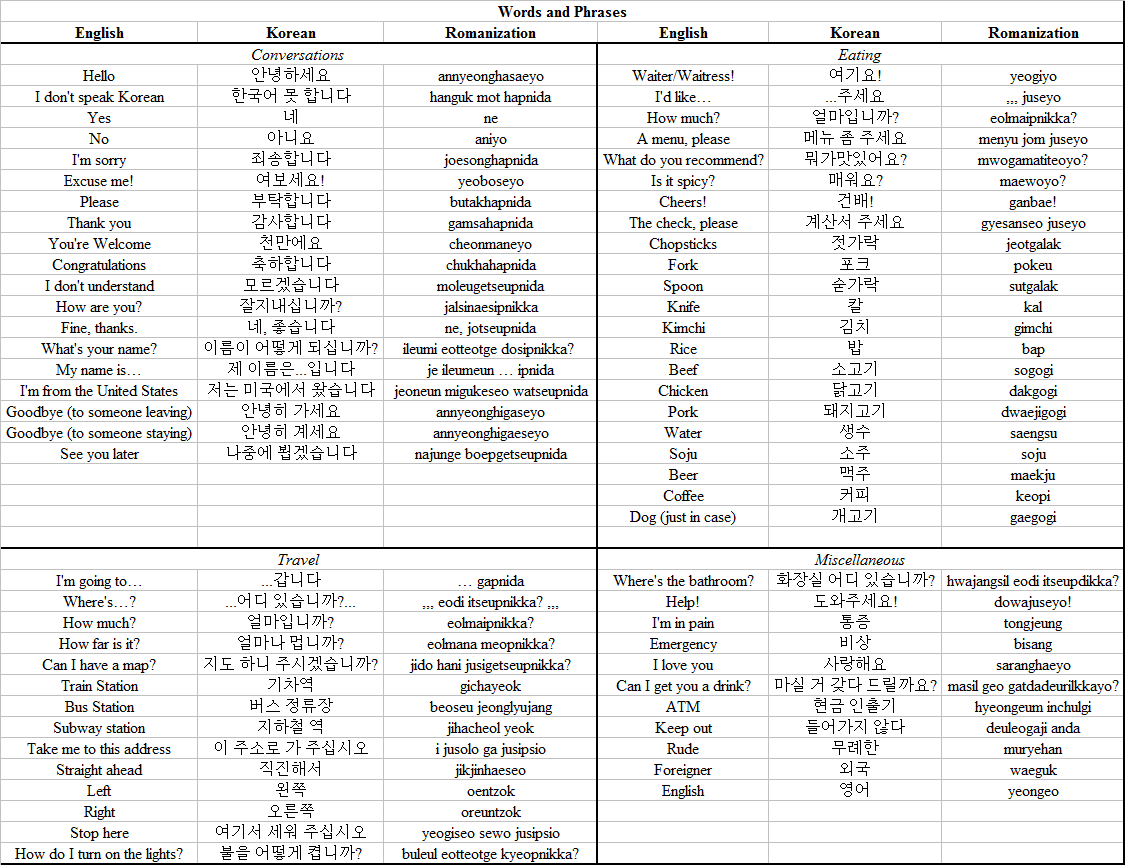
Learning Korean — Counting Numbers by Judy Jun Medium
List of item counters with native Korean numbers. Most of the item counters in Korean language are accompanied by the native Korean number system. The order is to use the object or item + number + Korean counting word. The examples below are written in Hangeul (Korean Alphabet) and romanized English.

Counting in Korean Belajar, Bahasa asing, Pemahaman membaca
일천. eel-chun. 1 & 1,000. (The pronunciation of the Korean word for 100 is very similar to that of the English word "bag".) (The vowel sound /u/ in "chun" is similar to the vowel in the English word "bun".) Now that we know the hundreds, we can combine them with smaller numbers to make non-round numbers in this range.

Korean Counting Words with Image YouTube
백 ( baek) means "100" in Korean. And from this point forward, you would only use Sino-Korean numbers. After 99, Native Korean numbers are no longer in use, so you don't need to know them. Anyway, here's the numbers 1 - 100 in the Sino-Korean system: Sino-Korean Numbers: 1-100. 1.

Little Dragons Counting in Korean Goodwin Martial Arts
한 (han) is the native Korean number for 1, it's the same meaning as 하나 (hana). 삼십오 (samsib-o) is the Sino-Korean number for 35. 시 (si) and 분 (bun) are the words used to measure hours and minutes, respectively. Thus, by combining all the numbers and their counterwords, it is easy to tell the time in the Korean language.

Counting to Ten in Korean Learn Korean with Fun & Colorful Infographics
We'll start with the Korean numbers 1 to 100, and then learn to count to over a billion by only learning a few Korean counting words. This lesson will also give you exercises to help you check your understanding of the Korean number system. Korean Counting. When counting in Korean, you will only need to learn around 35-40 numbers.

Korean Numbers & Counting Korece, Bilgi
The Korean language has two separate number systems. The first is called the Sino-Korean number system, which is based on Chinese numbers.The other is the native Korean number system. This article will teach you how to count in Korean with both Sino-Korean and native Korea number systems, and everything you need to know about when and how to use Korean numbers in conversations.

Learn to Count in Korean Korean words, Korean language learning
*There's no word to say "zero" in the Native Korean counting system. Instead, you can use 공 (gong) from Sino-Korean. Koreans also say 제로 (jero), from the English word "zero," for counting zero. 3. How to Say 10-100 in Sino and Native Korean. This time, let's count from 10 to 100.

Counting in Korean Korean Pinterest Korean, Count and Language
The word "Yul" means 10 in Korean. So, if you want to say the number 11, you say Yul and the word for 1, Hah nah: Yul Hah nah. And so on for numbers 11 through 19. The word is pronounced "yull.". The number twenty is "Seu-Mool" - pronounced "Sew-mool.". For numbers 21 through 29, start with the Korean word for 20.

Learning Korean Learn korean, Korean language, Korean lessons
The word 명 (myeong) is another common Korean word used for counting people: 사람 한 명 (saram han myeong) One person. 사람 두 명 (saram du myeong) Two people. 사람 세 명 (saram se myeong) Three people. If you don't know the specific counting word to use, just do your best to pick the one that you think is the best match. You.

🇰🇷 WHY ARE THERE SO MANY KOREAN COUNTING WORDS!?! YouTube
Counters Used: 명 / 사람 / 분. Example: 세 명 / 세 사람 / 세 분 (three people) Yes, there are indeed multiple counters you can use for your fellow human beings. All of them literally translate to "person" or "people" but each one is used a little bit differently. 명 is a rather informal counter and one used among casual company.

Let's ROK and Roll Learn Korean Basic Training
From Wikipedia, the free encyclopedia. The Korean language uses special measure or counting words for specific objects and events. These suffixes are called subullyusa ( 수분류사; 數分類詞) in Korean. They are similar to the ones employed in the Chinese and the Japanese languages. In English it is "two sheets of paper", not "two papers".

Native Korean Numbers 1100 Made EasyA Free Crash Course
연필 한 자루 ( yeonpil han jaru) or "one pencil". However, you could simply use 개, the inanimate object counter. 연필 한 개 ( yeonpil han gae) or "one pencil". 2. The Counter for People: 명 ( myeong) This counter can be used when counting people. You can use this counter for anyone—men, women, children, and the elderly.

Counting Numbers In Korean The Korean Numbering System Korean Images
Up to a game to practice count words in Korean? In this game, 8 counters are given, and you need to match them with the items provided. Hints on counters: Loads of them. Some of them are used with Sino-Korean numbers (eg. month, day, minute), others are used with Native Korean numbers. The counters in this game all go with Native Korean numbers.

Table 14 Korean language, Korean alphabet, Korean
So, here's how you start counting in Korean, from 1 to 100 in 5 minutes. Part 1: 0 to 10 in Korean. Part 2: 11 to 20 in Korean. Part 3: 21 to 30. Part 4: Counting to 100 in Korean. Part 5: How to Do Math in Korean. Before we begin, you need to know that there are 2 ways of counting numbers in Korean. There's 1) the Sino-Korean system and 2.

Learn Korean Counting from 110 in Korean YouTube
The Korean language uses special measure or counting words for specific objects and events. These suffixes are called subullyusa (수분류사; 數分類詞) in Korean.They are similar to the ones employed in the Chinese and the Japanese languages.. In English it is "two sheets of paper", not "two papers". Analogously, in Korean jang (장/ 張) is used to count sheets or anything that is a.

In this lesson, you will learn Korean numbers, sino Korean number
In the Korean counting system, the Sino Korean words (Chinese numbers) for 100,100,10,000 are 백(百), 천(千), 만(萬). However, the specific native Korean words for 100, 1000, and 10,000 existed in the old days in Korea.People don't use them in day-to-day life conversations anymore, and they have almost forgotten.